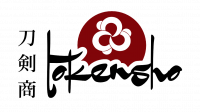Frequently Asked Questions
No and no. The law has not changed and is still stating that Katana have to be forged from “traditional materials in traditional ways”. Let us assure you that we have found a way to forge Matsukaze from Shirogami steel in Japan and export it without breaking, or even bending the law. But please understand that we will not make this procedure public. At least at this point in time.
Ok, how do I then know that it is REALLY forged in Japan by a licensed Katana smith and not elsewhere in some sweatshop by god-knows-who ?
We are going to be publishing a video with Kanemasa Ono in his forge, talking about his involvement in the project, next week (and will link it here). Should you as a customer still not be convinced, we will find a way together with you to prove it. If you want to fly over (at your own expense) and visit him at his forge, we will gladly arrange that for you, of course.
Why do you have the blade polished in Europe and not in Japan ? I have heard awful stories about western, self-proclaimed togishi.
We have checked out the works of a number of polishers in Japan, the US and Europe. Based on this and our experience with a number of the good ones, we picked those that best met our requirements for both the European and the US market. Have a look at the detailed images of a Matsukaze blade below .*
*The Matsukaze blade in the photos has been polished by Christophe Siliacus, who sadly passed away a few months ago. We have recently selected a new polisher and will publish an updated set of pictures, his name and some more information here soon.
What made you choose European artisans for the Koshirae of Matsukaze and not Japanese made Tosogu?
Combining Japan and Europe in Matsukaze is a deliberate choice for us and not just a marketing stunt. Furthermore I have worked with Gustavo and Manuel on a number of projects and I love their work. Both of them always delivered traditional, high quality work at reasonable cost against a timeline.
